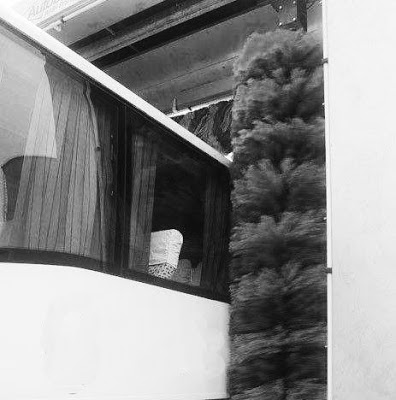Sign makers should assume that many of their customers will do some pretty stupid things when cleaning graphics. For this reason they must provide the end user with instruction covering proper cleaning and care of any graphics. When I sold fleet graphics, many years ago, I would give my customers an instruction sheet which included the do’s and don’ts listed below:
- Take extra care when cleaning graphics with a pressure sprayer. If you have ever user this equipment, you know that you can literally blow a baked on factory finish off of the metal. I’ve done it myself! Just think what excessive pressure does to a graphic.
When using a high pressure sprayer, you need to keep the nozzle at least 12″ from the vehicle surface. Also, keep your pressures low to moderate. And if you are using the type of sprayer that heats the fluid, use moderate temperatures.
- Always mix cleaning chemicals according to the manufacturer’s instructions. Before using the cleaning chemicals, read the MSDS sheet. Some cleaners used for vehicle cleaning contain mild concentrations of acids (for example, some of the cleaners used by the railroads contained 1% to 3% hydrochloric or some other heavy-duty acid.)Always use a non-abrasive detergent to clean the graphics.
- When using a brush to clean graphics, use a soft bristle brush rather than a hard bristle brush. The person doing the cleaning with the brush also needs to use a little tender loving care and some common sense.
- Graphics that are cleaned regularly in car wash systems utilizing nylon bristle brushes, must be overlaminated and, of course, edge sealed. Municipal buses are usually washed in these systems daily. Without an overlaminate, the brushes can abrade through a clear coat and ink system, right down to the vinyl. The first big graphics program that I ever sold was for a city bus line. Within three months, much of the printing on the graphics was abraded off of the vinyl. Not long after that, the case went to court, whereupon my employer was found to be negligent in the manufacturing of the graphics. The company was responsible for the removal, re-manufacture and reapplication of the graphics.
It was my “rookie” mistake not to ask the right questions. Sign makers are responsible for asking their customer how they are cleaning graphics; how often the graphics are cleaned and what chemicals and cleaning methods are used. You will note that I said it is the “sign maker’s responsibility” not the “vinyl manufacturer’s responsibility”. Sign makers also have the responsibility to provide adequate customer instruction. I am sure that this is not what the sign makers of the world want to hear. Like it or not, that’s the way it is.




